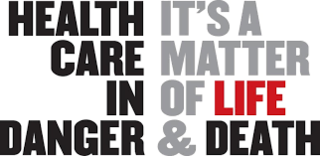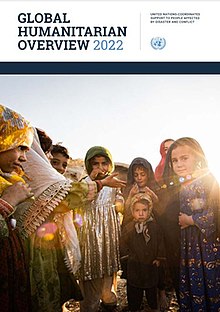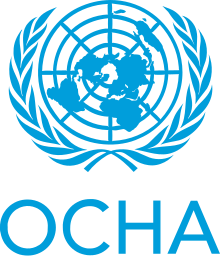
The World Food Programme (WFP) is an international organization within the United Nations that provides food assistance worldwide. It is the world's largest humanitarian organization and the leading provider of school meals. Founded in 1961, WFP is headquartered in Rome and has offices in 80 countries. As of 2021, it supported over 128 million people across more than 120 countries and territories.

An internally displaced person (IDP) is someone who is forced to leave their home but who remains within their country's borders. They are often referred to as refugees, although they do not fall within the legal definitions of a refugee.

Humanitarian aid is material and logistic assistance, usually in the short-term, to people in need. Among the people in need are the homeless, refugees, and victims of natural disasters, wars, and famines. The primary objective of humanitarian aid is to save lives, alleviate suffering, and maintain human dignity.

The Directorate-General for European Civil Protection and Humanitarian Aid Operations, formerly known as the European Community Humanitarian Aid Office, is the European Commission's department for overseas humanitarian aid and for civil protection. It aims to save and preserve life, prevent and alleviate human suffering and safeguard the integrity and dignity of populations affected by natural disasters and man-made crises. Since September 2019, Janez Lenarčič is serving as Commissioner for Crisis Management in the Von der Leyen Commission, and since 1 March 2023, Maciej Popowski leads the organisation as the Director-General.

Islamic Relief Worldwide is a faith-inspired humanitarian and development agency which is working to support and empower the world's most vulnerable people.

The United Nations Office for the Coordination of Humanitarian Affairs (OCHA) is a United Nations (UN) body established in December 1991 by the General Assembly to strengthen the international response to complex emergencies and natural disasters. It is the successor to the Office of the United Nations Disaster Relief Coordinator (UNDRO).

The New Humanitarian, previously known as IRIN News, or Integrated Regional Information Networks News, is an independent, non-profit news agency. It specializes in humanitarian stories from often overlooked or under-reported regions.
The Consolidated Appeals Process (CAP) is an advocacy tool for humanitarian financing, in which projects managed by the United Nations, NGOs and other stakeholders come together to approach the donor community funding international development activities. The target of the CAP is long-term development, whereas the Central Emergency Response Fund (CERF), started in 2006, targets sudden onset humanitarian crisis such as natural disasters. The 2011 CAP seeks US$7.4 billion to help 50 million people in 28 countries. The 2006 CAP was covered by the donor community to 63%.
There are multiple humanitarian, medical, economic, and industrial effects of the 2008–2009 Gaza War which started with the Israeli air strikes on 27 December 2008 and ended on 18 January with a cease-fire implemented unilaterally by Israel, and later the same day by Hamas and other Palestinian factions. The cease-fire followed twenty-two days of bombardment by land, sea and air which left over 1,300 Palestinians dead and over 5,000 injured, and the death of 13 Israelis. The United Nations Development Programme warned that there will be long-term consequences of the attacks on Gaza because the livelihoods and assets of tens of thousands of Gaza civilians have been affected.

Adeso is Nairobi-based humanitarian non-governmental organization.
Qatar Charity is a humanitarian and development non-governmental organization in the Middle East. It was founded in 1992 in response to the thousands of children who were made orphans by the Afghanistan war and while orphans still remain a priority cause in the organization's work with more than 150,000 sponsored orphans, it has now expanded its fields of action to include six humanitarian fields and seven development fields.

Humanitarian aid during the Syrian civil war has been provided by various international bodies, organizations and states. The main effort is coordinated by Jonh Ging of the United Nations Office for the Coordination of Humanitarian Affairs (UNOCHA). In 2014, U.N. Security Council Resolution 2165 authorised humanitarian aid to be supplied via four border crossings not controlled by the Syrian government, generally to supply rebel-controlled territory.

The United Nations World Humanitarian Summit (WHS) was held in Istanbul, Turkey, on May 23 and 24, 2016. The summit was an initiative of the Secretary-General of the United Nations Ban Ki-moon and was organized by the United Nations Office for the Coordination of Humanitarian Affairs.

The United Nations response to the COVID-19 pandemic has been led by its Secretary-General and can be divided into formal resolutions at the General Assembly and at the Security Council (UNSC), and operations via its specialized agencies and chiefly the World Health Organization in the initial stages, but involving more humanitarian-oriented agencies as the humanitarian impact became clearer, and then economic organizations, like the United Nations Conference on Trade and Development, the International Labour Organization, and the World Bank, as the socioeconomic implications worsened.

The Grand Bargain: Agenda for Humanity, usually called the Grand Bargain, is an agreement to reform the delivery of humanitarian aid, that was struck at the World Humanitarian Summit in May 2016. The agreement contains 51 specific commitments, grouped into ten focus areas, with activity targets to be completed by January 1, 2020.

The Humanitarian Cluster System is a system, used by the United Nations Office for the Coordination of Humanitarian Affairs, to coordinate multi-agency responses to large humanitarian emergencies.

The State of the Humanitarian System is a recurring report that was first published by ALNAP in 2010 and is updated every two or three years.

Health Care In Danger is a campaign organized by the International Committee of the Red Cross that highlights violent attacks on patients, healthcare workers, and healthcare facilities in conflict zones.
Grain From Ukraine is a humanitarian food program that was launched on November 26, 2022, on the 90th anniversary of the beginning of the Holodomor of 1932–1933, by the President of Ukraine, Volodymyr Zelenskyy, to supply grain to the poorest countries in Africa.
Humanitarian aid in conflict zones is the provision of emergency assistance and support to individuals and communities affected by armed conflict, with the aim of alleviating suffering, maintaining human dignity, and preserving life. This type of aid encompasses a wide range of services, including but not limited to, the delivery of food, water, shelter, medical care, and protection services, and is delivered amidst challenging and often dangerous conditions, with the goal of reaching those most in need regardless of their location, political affiliation, or status.
















